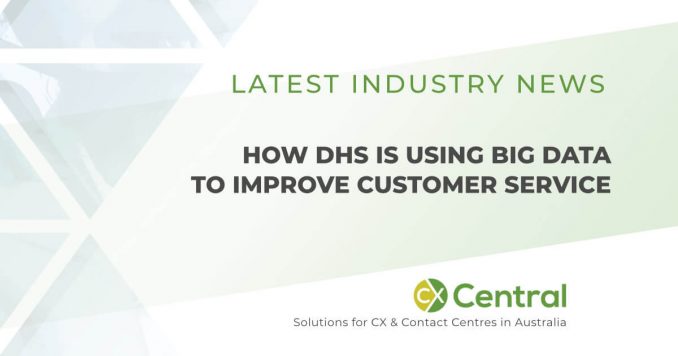
How DHS is utilising big data to improve customer service
The Department of Human Services – DHS is utilising big data to improve customer service as it aims to unlock the power within its 23.5 million active record according to CIO.
Speaking at the Teradata Summit in Sydney, DHS health and information deputy secretary Barry Sandison told delegates that it has a “gigantic database” of customer behaviour information.
“Every Australian is in the database and we divide our big data sets into child support, Centrelink and Medicare. There are 23.5 million active records,” he said.
DHS operates 27 contact centres around Australia.
Sandison said the department uses big data to look at the day-to-day performance of front line staff.
“It’s about understanding what happens day by day and how we can shift resources around the organisation,” he said.
“We have central teams that monitor activity across the 27 call centres. Each of these teams can divert staff from one port or move work around the country based on the big data coming in.
“If you think about the amount of queries we might get about benefits or child support, its millions of calls. We need the right number of staff in the right locations because we operate 200 programs on behalf of the federal government.”
For example, he said that DHS gets measured on how quickly call centre staff answer the phone. When people ring up Centrelink, it might take 10 to 20 minutes before the call is answered. Call answering times depends on how many staff are rostered on.
He added that the Australian Medical Association (AMA) monitors the speed with which calls are answered on the Pharmaceutical Benefits Approval line.
“Doctors have to ring up and get the authority to approve some medicines. We have to respond within 30 seconds and the handling time has to be within 30 seconds. Our junior staff have to understand pharmaceutical terms but with experience, they get there before the doctor does,” said Sandison.
“If these calls span out to 45 seconds, we get complaints.”
According to Sandison, this big data is used to measure how fast front line staff respond.
“We could get to a point where we might take one second out of their response time by changing the way they use scripts on screen. That one second gets us back into a performance KPI and saves money in terms of your taxes at work,” he said.
Recommended read: The evolution of Australian Government Call Centres
Find suppliers of the latest technology for call centres and customer experience in our CX Directory >

Be the first to comment